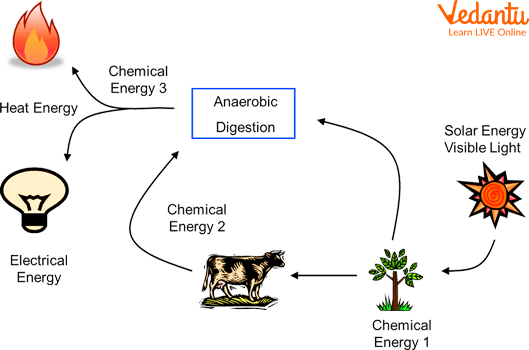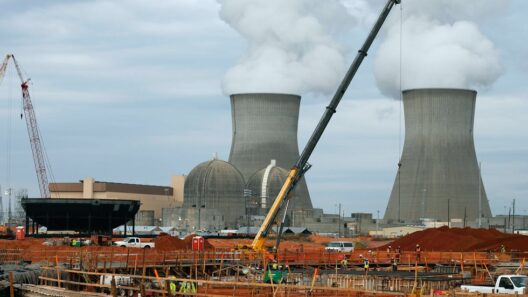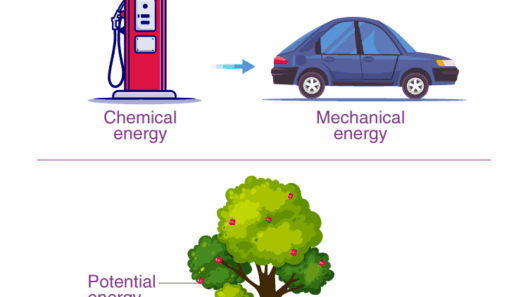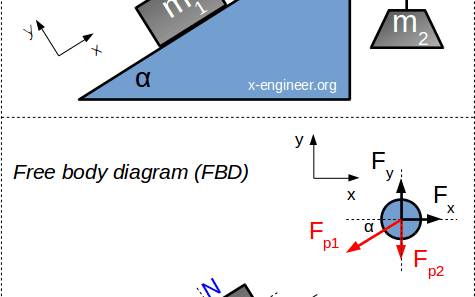Energy transformation is often likened to the metamorphosis of a butterfly; just as the caterpillar evolves into a stunning creature, energy undergoes a remarkable transition from one form to another. This transformation is crucial to the underlying principle of energy conservation — a cornerstone of the laws of physics that dictates that energy cannot be created or destroyed but merely changes from one form to another. To better understand how energy conservation operates during various transformations, we can examine distinct examples across different contexts. By doing this, we elucidate the powerful interconnectedness of systems we often overlook.
At the core of energy transformation examples lies the concept of kinetic and potential energy. Imagine a pendulum swinging gracefully. At the highest point of its arc, it possesses maximum potential energy, akin to a coiled spring, waiting to release its stored energy. As it descends, this potential energy deftly converts to kinetic energy, reaching its zenith as it swings toward the lowest point. Here, the energy transitions seamlessly while the total amount remains unchanged, embodying the principle of conservation. This interplay is not only a fascinating concept in physics but also a metaphor for resilience and adaptability in the face of change.
Taking this further, let us consider the phenomenon of photosynthesis. In this extraordinary process, plants convert solar energy into chemical energy. Sunlight, much like an artist’s brush, paints life into the molecules within green leaves. When chlorophyll captures sunlight, it initiates a transformation that synthesizes glucose from carbon dioxide and water, thus conserving the energy harvested from the sun. This conserved energy is not merely a lifeless form; it nurtures ecosystems and sustains life itself. The persistent cycle of energy transformation resonates deeply with our responsibilities as stewards of the Earth.
A compelling example of energy transformation occurs in hydroelectric power plants. Here, gravitational potential energy is converted into electrical energy as water flows through turbines. The dam acts as a sentinel, holding back the water like a damper holding back a tempest. As water is released, its potential energy dissipates into kinetic energy, turning turbines, which in turn generates electricity. The conservation of energy throughout this process highlights the symbiosis between natural resources and human ingenuity, offering a meaningful metaphor for balance.
Moreover, consider the transformation that takes place in geothermal energy systems. The Earth itself serves as a grand repository of energy, akin to a deep chest of treasures buried beneath the surface. By tapping into the planet’s core, geothermal energy utilizes the inherent heat from Earth’s interior, transforming it into usable power. Through the conservation of energy principle, the heat energizes steam, propelling turbines, thus demonstrating how sustainable practices can emerge from the depths of our planet. This example underscores the necessity of harnessing and extracting energy responsibly, acknowledging the Earth’s dividends while preserving its integrity.
On a smaller scale, one can observe energy transformation within the confines of a simple battery. A battery stores chemical energy, waiting to be unleashed as electrical energy when connected to a circuit. When a toy car races down the street, the stored energy is converted into motion. The act of pressing the switch is reminiscent of triggering a cascade of events that culminate in vibrant energy transformation, staying true to the conservation principle. In our everyday lives, these small, seemingly innocuous devices play a significant role in reminding us of the cycles of energy exchange that govern our world.
Furthermore, the transformation from electrical energy back to thermal energy in homes showcases the widespread impact of energy conservation. When we turn on a heater, electrical energy is intricately transformed into heat, warming up our surroundings. This process is essential for comfort and well-being, bridging the gap between raw energy and human experience. Recognizing this transformation compels us to use energy wisely and efficiently, pushing back against the tide of wastefulness while fostering a culture of conservation.
The remarkable aspect of energy transformation is not just in the energy itself but in the lessons it imparts about interconnectedness and responsibility. Just as in nature where each transformation contributes to the vitality of ecosystems, society must embrace a paradigm shift to ensure that our energy practices reflect sustainability. Industries, communities, and individuals alike are urged to consider how every form of energy can be utilized efficiently while respecting the planet’s limits.
In conclusion, energy transformation and conservation are intricately linked to our understanding of the universe. From the hypnotic swing of a pendulum to the verdant embrace of flora capturing sunlight, every example echoes the theme of change and the power it wields. By recognizing these transformations, we can cultivate an awareness of our own energy practices and the impact on the environment. The call to action is clear: embrace these transformations, champion sustainability, and understand that in every exchange of energy lies the potential for healing and rejuvenation. The Earth is a complex web of energy systems, each playing a vital role in our survival. To protect it, we must not only conserve energy but also respect the profound cycles of change that exist around us.






